Thrust bearings are used in several mechanical systems that are built for rotation where axial loads have to be taken care of, be it an industrial machine or a medical instrument. They ensure smooth mobility over a wide range of applications. This blog will discuss thrust bearing structures and the different kinds of thrust bearings in aspects of engineering. Understanding their designs, functions, and applications would enable readers to grasp how thrust bearings enhance the performance and reliability of many machines or devices that are in use on a daily basis.
What are thrust bearings, and how do they work?
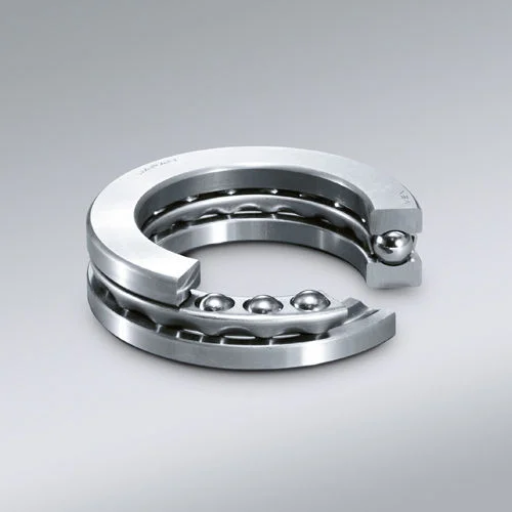
A thrust bearing is a specialized mechanical bearing designed to withstand axial loads, that is forces in the plane of the shaft. They achieve this by minimizing the friction between two or more rotating parts, thus allowing smooth operations even with the application of such axial loads. Thrust bearings usually come in the form of pairs of raceways enclosing balls or rollers as precision-made rolling components. When needed, they help the rolling elements to rotate under load, reducing friction and thereby promoting efficiency even in extreme conditions. Their sturdy construction makes it possible for them to be used in critical applications such as automotive gearboxes, turbines, and heavy industrial equipment.
Understanding the basic principles of thrust bearings
I have learned that thrust bearings are important components in the performance of numerous machines. Their capacity to handle axial loads with little friction is a useful advantage in many areas that require precision and endurance. For example, in the case of high-speed turbines or parts of auto gears, thrust bearings provide reliability and longevity. Once one sees how they are built up, with multi-layer raceways and rolling elements, it becomes clear how they can bear such enormous forces but still work. This information is an important indicator that they are profound components in engineering ‘solutions where efficiency and reliability are the order of the day’s purposes.
Types of thrust bearings: Ball, roller, and needle
I have learned that the types of thrust bearings – ball, roller, and needle- have been purposely designed in a manner that serves their purpose and achieves certain load, speed, and even accuracy.
- Ball Thrust Bearings: These bearings would be more efficient in low-load mediums and when the rotations are high speed. A number of spherical balls are placed in the raceway that can cater to the axial loads efficiently. They are ideally suited for low-power applications such as small electric motors or small gearboxes due to their geometry. So, one important thing to note is that it is not designed to take helpful radial forces as the majority of loads applied will be axial in nature.
- Roller Thrust Bearings: Roller bearings have a greater load capacity than ball thrust bearings. Instead of balls, cylindrical rollers are employed, which allows them to distribute the load over a larger area, thus better suited for those applications that require high duty. These are common in industrial machinery or automotive axles. They don’t perform as well as ball thrust bearings at extreme speeds though. The parameters that have to be taken into account are the roller design, which serves its purpose of increasing load capacity.
- Needle Thrust Bearings: The needle roller bearing is a special hardcore type of bearing wherein the rollers are elongated and thin and look like needles. A needle thrust bearing is capable of supporting large axial loads while occupying a small volume space, making them suited for facilities where space is a limitation, like in compact machines or transmissions. Their highlight is the space-saving feature along with high load-supporting ability.
Each variety is selected according to a specific application requirement, and having an understanding of these parameters guarantees improved performance and durability in engineering systems.
How thrust bearings support axial loads
thrust bearings are important components when it comes to the management of axial load. Their function is to transmit force that acts parallel to the axis of rotation of the bearing, and hence, they are necessary for the function of machines. What is good about the thrust loads is that they can be distributed easily, and this helps reduce the damage to the systems that fail to operate. Based on the requirements, I have used different types of thrust bearings used for different purposes like thin for high rotational speeds or thick for industrial heavy systems. They are effective because of their design, which helps reduce friction, and are still effective when subjected to high axial loads.
What are the main types of thrust bearings?
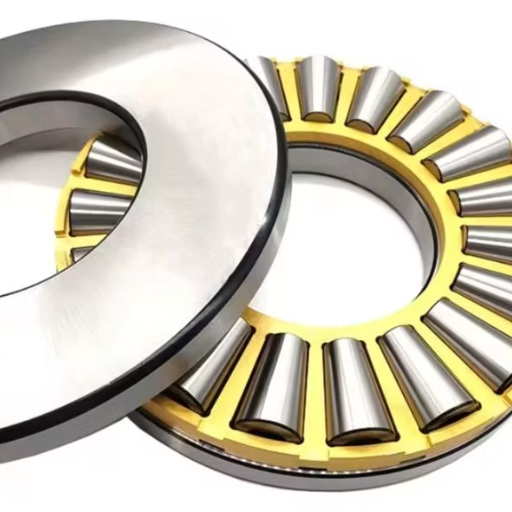
One can consider three main types: ball thrust bearing, roller thrust bearing, and fluid film thrust bearing. Ball thrust bearings are used for applications where moderate axial load and relatively high speeds are required because of the frictionless rolling of balls. Roller thrust bearings, in contrast, are capable of taking higher axial loads because cylindrical or tapered rolling elements are more effective in load distribution. Finally, fluid film thrust bearings consist of a very thin film of fluid applied to support the load and are very good for high-end and heavy-duty industrial systems. Each type is designed for a specific operational requirement, and for all three, the reliability is assured for a wider range of applications.
Thrust ball bearings: Design and applications
there are thrust ball bearings and these kinds can be an effective option for bearing axial loads. The way they are built includes a set of steel balls placed between two washers, one of which is secured in order to perform rotation while the other does not move. This configuration provides low friction, smooth operation, and proper load distribution. They are particularly effective in automotive transmissions, turntables, and industrial pumps, particularly in providing axial loads. However, they do not support radial loads due to their configuration, which emphasizes axial support. Overall, thrust ball bearings have great performance when selected and fitted properly.
Roller thrust bearings: Cylindrical and tapered options
Roller thrust bearings are said to be capable of sustaining huge axial loads as they come in two main types- cylindrical and tapered. Thanks to their robust axial load tolerance and shock resistance, cylindrical roller thrust bearing performs well in heavy-duty applications. On the other hand, the axial and limited radial load properties of tapered roller thrust bearings make them applicable in a number of industries where larger bearing life and load capability are required. Choosing between these options tends to be relative to the application’s requirements of load type, speed, and even the working environment.
Spherical roller thrust bearings: Advantages and uses
Spherical roller thrust bearing applications are very complex in nature but are manageable and efficient, which explains their versatility and reliability in many industries. Their configuration has particular benefits and special purposes, which we will explain the details of it below:
- High Load-Carrying Capacity
Spherical roller thrust bearings are capable of withstanding severe axial loads and, therefore, provide solutions for heavy-duty applications. In addition, these bearings support some proportion of radial loads, which adds to their flexibility. This comes in handy, especially in devices such as pumps, cranes, and marine propulsion, where both loads coexist.
- Self-Aligning Capability
The most critical feature of these deep groove ball bearings is the capability to self-align. The accommodation of misalignment between shaft and housing, which is common during installation or usage conditions, is made possible. Such a situation improves the reliability of the components in use, such as turbines and gearboxes.
- Durability in Harsh Conditions
Spherical roller thrust bearings are designed with tough materials and naturally are designed to operate effectively in harsh environments, including extremely high vibrations, shock load, and high-temperature variations. This is the reason why industries such as mining and heavy machinery use them, as they guarantee operations with minimal downtime.
- Low Friction and Heat Management
The configuration does reduce friction even when the bearing is heavily loaded which in turn helps in reducing energy required and operational heat. This helps increase the bearing’s life span and allows efficient functioning of power plants and other energy-demanding industries.
Uses of Spherical Roller Thrust Bearings
Spherical roller thrust bearings are commonly found in applications such as:
- Hydraulic Presses –The ability to turn heavy axial forces into mechanical axial loads makes hydraulic presses the ideal tool.
- Ship Propulsion Systems – As they constantly operate under pressures whilst in the ocean, high stresses never seem to break them.
- Wind Turbines – The combination of self-aligning properties with a fairly large axial load is ideal for coping with wind pressure.
- Industrial Gearboxes –Assured by advanced shaft design, these gearboxes are very tolerant of several degrees of misalignment and withstand quite a lot of shock loads.
Due to the specific operating conditions such as load type (axial and radial) and the desired life, spherical roller thrust bearings are becoming a center of choice for robust industrial applications. Such a design guarantees the reliability of the bearings while extending the operational efficiency across many applications.
Where are thrust bearings commonly used?
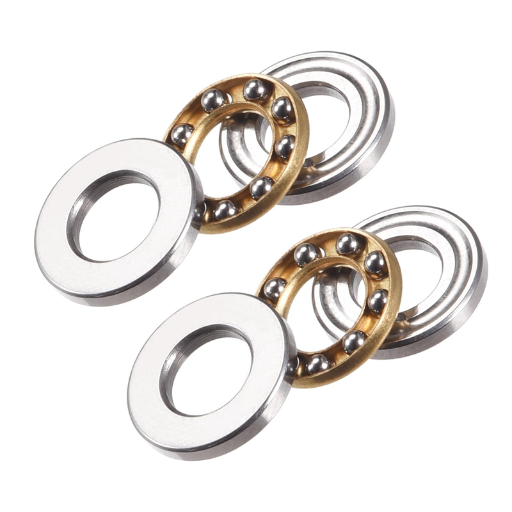
In applications where axial loads have to be supported quickly and efficiently, thrust bearings are often used. I’ve observed them being extensively applied in the automotive sector, where they are used in gearboxes and driveshafts. They are also very important in cranes and marine propeller systems, as they are able to withstand high axial forces. I’ve even seen them in power plants where they are able to hold turbine shafts to eliminate unwanted vibration. Pumps, industrial compressors, and various other machines use them due to their wide applications and long life.
Automotive applications for thrust bearings
In the context of vehicles, thrust bearings are predominantly used in the upper rotary parts of transmissions, steering, and suspension systems to handle axial forces acting on various components of the system. Clutch or differential assemblies of traction machines that are pressed together are permitted to rotate due to this bearin,g enabling the clutch assembly to operate efficiently. Thrust bearings also serve a critical role in preventing wear and minimizing friction, thus enhancing the life expectancy and efficiency of the vehicle’s mechanical installations.
Industrial machinery and equipment use
Bearings are a key aspect in the proper functioning of every industrial machine and equipment, as I have witnessed during my time and work in this sector. Their application includes conveyor systems, gearboxes, and many more; bearings are essential for enabling precise motion while also supporting heavy loads. Furthermore, they not only improve the functioning of these machines but also great increase their life by minimizing friction and wear. In both high-speed and heavy-duty machines, there are bearings that decide the degree of safety and efficiency in production as well as the extent of time lost without any productivity.
Marine and Aerospace Thrust Bearing Applications
In order to bear high axial load with dependability in harsh working conditions, thrust bearings for marine and aerospace applications have been designed. In the case of marine systems, they are worrying components in connection with thrust for propeller shafts to operate properly and to bear severe forces, which usually happen in propulsion systems. On the contrary, aerospace thrust bearings are built to withstand low and high temperatures, high rpm, and loading conditions in the components of jet engines and rotor assemblies. These specialized types of bearings are important for safety, reliability, efficiency, and performance in both industries.
How do thrust bearings compare to radial bearings?
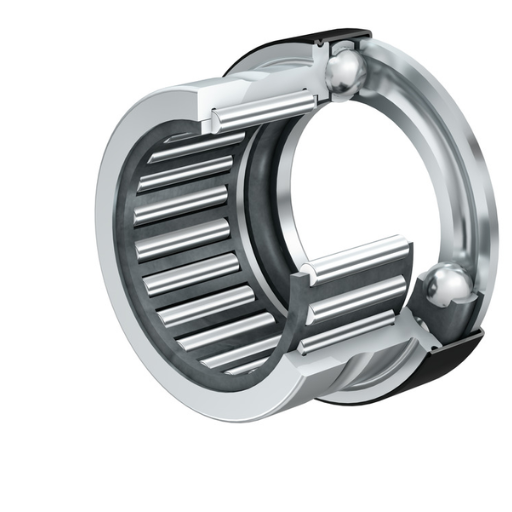
their fundamental difference relates to the load direction, which each bearing type is intended to bear; radial bearings are considered as one perpendicular, whereas thrust ones are the axial load direction bearings. Due to this property, radial bearings will be able to work with secondary axial forces, but thrust bearings won’t be able to handle opposing radial forces or torque moments. This is the thrust bearing’s main advantage: it’s able to perfectly fit the need for axial applications, such as rotary engines, propellers, wind turbines, avionics, etc. Radial bearings are designed to sustain secondary axial force but will provide negligible or no torques exerted; an example of this use would be bicycle pedals.
Differences in load handling capabilities
the load comparing capacities of thrust-type bearings and radial bearings, whether the relative axis is top or bottom cards, boil down to the types of forces they are meant to bear and support. To provide you with an easier explanation, here is a breakdown:
- Direction of the Load – Thrust bearings are able to withstand axial loads, which are forces applied along the shaft, such as vertical thrust or a push-pull force. Whereas axial loads are thrust loads, radial bearings support radial loads, which are forces acting perpendicular to the shaft like a wheel rolling on the ground surface. Therefore, it is extremely important to know the direction of the load while selecting a bearing.
- Design Specifications – Most thrust bearings have flat or grooved surfaces, which enable them to withstand axial loads effectively, while radial bearings comprise rollers or balls in circular races that evenly transmit radial forces. The shape of each bearing conforms to its load direction so that it is always effective with full durability for a healthy life.
- Load Magnitude –In general, uprated or axial thrust bearings handle larger thrust loads in a better way over a longer period of use than the other types of bearings, which have the relative toughness of sustaining a weak force to oscillation. Radial bearings are designed to support a radial loading, which acts constantly about the axis of rotation.
When selecting a bearing, one should always take into account the load direction, design specification, and load magnitude. All these questions should be thoroughly examined. Always remember that using the wrong type of bearing can lead to inefficient working, excess wear, and perhaps even premature failure of the system.
Combining thrust and radial bearings for optimal support
turning thrust bearings and radial bearings is always about understanding the full turn of the application requirements. These two types of bearings can work together to effectively support optimal system performance, especially when components are subjected to both axial and radial loads. For example, when employing turbine rotors or when using automatic transmissions, thrust bearing and radial bearing units are combined to increase the stability of the structure under the action of torsions from multiple directions. The shear caused by the mating of the two varieties of the bearing must be taken into consideration by selecting appropriate materials, configurations, and lubrication. Also, in my case, I have noticed that a well-selected combination prolongs the service life of the system and enhances its performance by reducing the chances of uneven loadings and failure of the system parts.
What factors should be considered when selecting a thrust bearing?
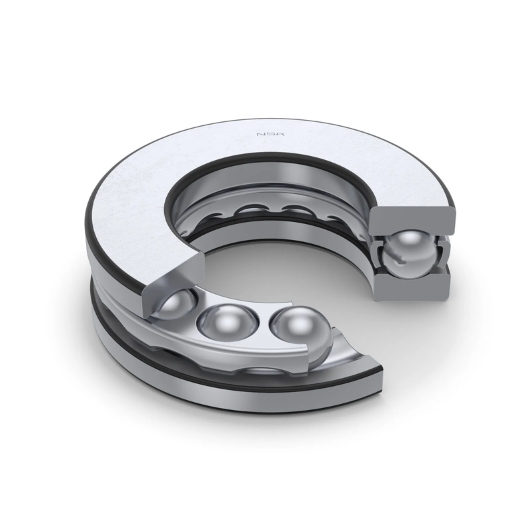
Some key factors to take into account while selecting a thrust bearing include load capacity, speed, alignment tolerance, and environmental conditions. It is critical to ensure that the bearing is capable of sustaining the axial loads, which include the level of misalignment and vibration of the system. Materials selection is of immense importance, especially when the bearing is subjected to high temperature, chemically hostile, or contaminated environment. Also, if applicable, consider how lubrication will be done in order to achieve optimal functioning and wear and take into consideration how easy it is to install and maintain in relation to the requirements of the application. If properly addressed, these factors aid in enhancing performance and reliability.
Load capacity and speed requirements
Every time I begin an analysis that focuses on the operational requirements of the application, I take into account the expected load, which is incorporated in the analysis, whether it is radial or axial, or both. This expected load, in turn, defines the construction and material for the bearing. In the case of high-speed applications, the focus is on the properties of the bearings to ensure minimal movement drag and heat development while in operation without greatly sacrificing strength. It is important to find the ideal load that can be handled in conjunction with speed for ideal results to be obtained for the target purpose.
Environmental conditions and lubrication needs
Para las condiciones ambientales, resulta importante evaluar factores como las temperaturas extremas, la humedad y la exposición a contaminantes ya que estas influyen directamente sobre la duración y las características de funcionamiento de los rodamientos. Los rodamientos que deben trabajar en condiciones severas o cambiantes tienen que estar provistos de sellos y materiales que tengan resistencia a la corrosión. Referente a la lubricación es importante el uso de aceite o grasa que se adapten a las condiciones de operación. El uso adecuado de la lubricación disminuye el desgaste, evita el calentamiento y proporciona un funcionamiento más eficaz. Las obras de mantenimiento programadas periódicamente deberán incluir la vigilancia y recarga del lubricante para que la eficiencia y la vida útil se prolonguen.
Space constraints and installation considerations
I never fail to mention the necessity of planning in advance – in most cases, the placement of compact machinery or a system that bears a limited number of dimensions requires specific needs that can be fulfilled by developing and using precision fractional bearings. I advise estimating the volume at the earliest design stage in order to take into account the sizing and type of a certain bearing. Besides, the operational characteristics of the final assembly should certainly be taken into account – the selection of bearings that must be less complicated in installation generally reduces the chances of misalignment in the assembly process. In my experience, if these parts are given attention, robots will be much easier to install in machines, as well as provide greater reliability in the future.
How can thrust-bearing performance be optimized?
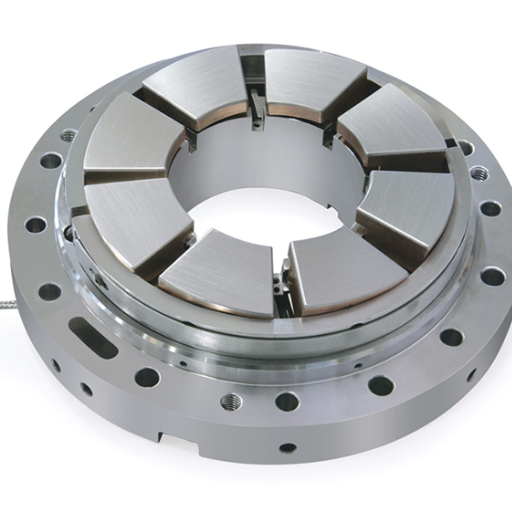
To achieve favorable performance of thrust bearings, it is necessary to adopt an appropriate design, choose the correct materials and devices, and periodically service thrust bearings. In my opinion, the following are the most important issues to be dealt with:
- Load Capacity
A check should be made of the thrust bearing pushing in the axial direction in the maximum load, which will be experienced in your case. Always figure out what the maximum, normal, and peak loads will be supported during operation and then pick a bearing that has a large enough safety factor. Bearings that are overloaded do not last long due to an increase in the rate of wear.
- Lubrication
The right amount of lubrication is, however, fundamental in reducing the friction coefficient and the heating effect. High-quality lubricants such as oils, greases, or solids which are appropriate for the working condition should be used. Investigate the lubrication intervals and make a case for automatic lubrication systems that deliver the required performance consistently.
- Operating Environment
Take note of the surrounding environment, such as temperature, humidity, and any contaminant. Bearing units installed in locations where dust or other foreign particles are present need adequate sealing solutions to avoid penetration of particles. In cases when the temperature increases, some ceramic materials or specially conditioned steel will not be compromised.
- Alignment
When the alignment is not done correctly, it can cause uneven loading on bearing elements, which may lead to their quick wearing out. While carrying out such operations, I recommend installing some aligning tools or components aimed at simple alignment with respect to the thrust bearing’s loading.
- Surface Finish and Material Quality
The material of which the bearing is made and its surface finish are critical factors in attaining the performance of the bearing. Use only the bearings produced in the proper way, that is, the ones made from well-tempered steel or wear resistance alloy.
- Regular Inspection and Maintenance
Routine inspections should never be underestimated. Looking for residue, corrosion, and abnormal sounds can be early warning signs to reach for a resolution before things get out of hand. Create a proper maintenance plan to check and change parts as necessary.
Taking all these details into account, it is reasonable to say drive bearings can work optimally, increase longevity, and guarantee good performance of the equipment. Effective measures allow for the reduction of the period of suspension of machinery caused by failures, especially in bearings. I’ve followed this structured approach in numerous applications numerous times, and the effects have always been self-evident!
Proper lubrication techniques for thrust bearings
In order to guarantee the endurance as well as the effectiveness of thrust bearings, accurate lubrication is inevitable. First, the correct lubricant should be chosen, which is usually oil or grease of good quality and is recommended for the range of temperatures and pressures at which the components will operate. The lubricant must be applied uniformly, which is necessary to avoid dry patches, which potentially lead to abrasion. Maintenance of the right quantity of lubricant is paramount since too much lubricant can create excessive temperatures while too little lubricant increases torque. Using and replacing lubricant as specified by the manufacturer is also a good regular practice to avoid contamination or deterioration. Sufficient lubrication also prevents bearing surfaces from damage and enables them to function efficiently regardless of varying force.
Alignment and installation best practices
In order for a bearing to function properly and last long, it is pivotal to install it correctly and in perfect alignment. In my opinion, the first action has to be to check that the shaft, the housing, and the mounting surfaces are clean and within tolerances. Premature failure of bearing is quite often due to misalignment, therefore alignment tools must be utilized to ensure proper mount positioning when installing the bearing. When mounting the bearing, I suggest that you try to put even pressure while tightening the bearing and do it progressively to avoid damage. Also, remember that paying close attention to the manufacturer’s instructions is a must since each type of bearing has its own installation methods or tools. Getting the alignment and installation right from the outset will by and large save time and money in the future.
Monitoring and maintenance strategies
In order to perform at their best and last the longest time possible, rotation shafts need effective monitoring and maintenance. From time to time, rotation shafts should be checked for wear, noise, or excessive vibrations because that suggests a potential malfunction. Tools of condition monitoring such as vibration analysis or thermal imaging allow for remote observations of the bearings. They also need lubrication, and the type should fit the working conditions. The amount should be replaced at regular times. Also, the operating conditions must be clean, and pollutants must be removed as soon as possible to reduce failures. Therefore, a proactive system of maintenance will lower downtime and costs in the long run.
What are some common issues with thrust bearings, and how can they be solved?
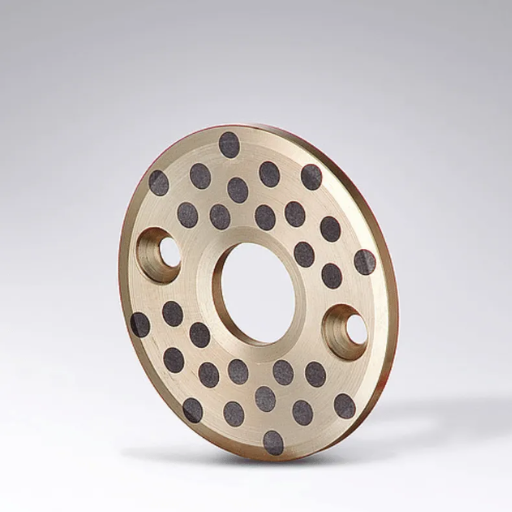
Thrust bearings can also be subject to a number of common problems, such as overheating, excessive wear, or misalignment. Overheating usually occurs when the thrust bearing is under-lubricated or lubricants that are unsuitable for use are applied, thus it is important to use the correct amount. Heavy loading and contamination are common causes of extreme wear that leads to bearing failure. That said, proper maintenance and load checks on the bearing can significantly help reduce wear and tear. Another failure source could be due to misalignment caused by faulty installation or poor structure properties of the equipment. Hence, when setting up, ensure perfect alignment between the bearing and other moving parts. A good maintenance plan can also help minimize the risk of contamination around the thrust bearing while it keeps operating at efficient load levels. This will enhance the reliability of the equipment while increasing its durability.
Dealing with excessive wear and friction
To prevent excessive wear and friction in thrust bearings, make sure that they are properly lubricated with the correct type and amount, as recommended by the manufacturer. Also, periodically clean the working environment in order to reduce contamination from dirt and particles. Make sure that the thrust load over the bearing does not exceed reasonable limits, as doing so speeds up wear. Also, make sure that when the bearing is installed, it is properly mounted to avoid excessive rubbing. With these measures, wear can be controlled, the thrust bearing’s performance improves,d and its life increases.
Addressing misalignment and uneven load distribution
In my opinion, irregularities and improperly positioned components can easily be solved once a careful review is made during the install. T hardly overemphasized the perfect alignment of shafts to their bearings during the assembly while everything was done with proper tools. If I suspect that parameters related to load forces are not uniformly distributed, I check the operating conditions to make sure they are within the operational range of the bearing. The issues of those types are quite often resolved by shifting the center of strength or realigning the assembly. Also, by taking adequate stress readings throughout the operating period, the chances of the center of the system shifting and having to move it back around are reduced. It is this way of doing that has always improved both the workings of the machines and the lifetime of the parts in my practice.
Troubleshooting noise and vibration problems
For the issues related to noise and vibration, the first step is to get to the source of the problem, which could be caused by several common reasons, which are poor lubrication, contamination, misalignment, or even bearing wear. First of all, my suggestion is to conduct a complete check of the bearing assembly and other parts, making sure no damage or changes can be seen. First, try to monitor vibration analysis in order to detect the cause and allow measurement of vibration. To repair such defects, it is sometimes necessary to first re-lubricate the contaminated area with the proper grease or oil or replace the defective bearings. Also, maintaining accurate alignment along with evenly distributed loads can reduce the chances of such events to occur in the future thereby increasing the efficiency of the equipment.
Reference
- Thrust Bearing Types, Features, Applications – ISK BEARINGS
- Thrust Bearings – An Overview – Tameson
- Thrust Bearings to Reduce Friction and Support Axial Loads – BMC Bearing
Frequently Asked Questions (FAQs)
Q: What is a thrust bearing, and how does it differ from other types of bearings?
A: A thrust bearing is a type of rotary bearing specifically designed to support axial loads (thrust loads) in mechanical systems. Unlike radial bearings that primarily handle forces perpendicular to the shaft, thrust bearings are engineered to manage forces parallel to the shaft. They come in various types, including ball thrust bearings, roller thrust bearings, and tapered roller thrust bearings, each suited for different applications and load capacities.
Q: What are the main applications of thrust roller bearings?
A: Thrust roller bearings are used in applications where high axial loads need to be supported. They are commonly used in automotive applications, such as in transmission systems, steering mechanisms, and wheel hubs. In industrial settings, thrust roller bearings are utilized in heavy machinery, pumps, turbines, and conveyor systems. These bearings are also found in marine propulsion systems, aerospace equipment, and construction machinery, where they help manage significant axial thrust.
Q: How do tapered roller thrust bearings differ from other thrust bearings?
A: Tapered roller thrust bearings are a specific type of thrust bearing that can accommodate both radial and axial loads simultaneously. The tapered design of the rollers allows for better load distribution and higher load capacity compared to flat roller thrust bearings. This bearing type is particularly useful in applications where combined radial and axial loads are present, such as in automotive transmissions, machine tool spindles, and industrial gearboxes.
Q: What are thrust needle bearings, and where are they typically used?
A: Thrust needle bearings are a type of thrust bearing that uses small cylindrical rollers (needles) to support axial loads. These bearings offer high load capacity in a compact design, making them ideal for applications with space constraints. Thrust needle bearings are commonly used in automotive applications such as clutch release mechanisms, steering columns, and transmission systems. They are also found in small motors, pumps, and compressors where axial loads need to be managed in a limited space.
Q: How do thrust bearings support greater thrust loads compared to other bearing types?
A: Thrust bearings are specifically designed to support greater thrust loads by distributing the axial force over a larger contact area. The bearing design, whether it uses balls, rollers, or needles, allows for efficient load distribution across multiple points of contact. Additionally, thrust bearings often incorporate specialized components like thrust collars and house washers to further enhance load-bearing capacity. Some thrust bearings, like tapered roller thrust bearings, can also be used in pairs to support even higher axial loads in both directions.
Q: Can thrust bearings handle both radial and axial loads?
A: While thrust bearings are primarily designed to handle axial loads, some types can accommodate both radial and axial loads to varying degrees. Tapered roller thrust bearings and spherical roller thrust bearings are particularly adept at handling combined loads. However, for applications with significant radial loads, it’s often better to use a combination of radial and thrust bearings or select a bearing type specifically designed for combined loading, such as angular contact ball bearings or certain types of roller bearings.
Q: How do thrust bearings compare to plain bearings or sleeve bearings in terms of axial load support?
A: Thrust bearings generally offer superior axial load support compared to plain bearings or sleeve bearings. While plain bearings (also known as bush bearings) can handle some axial loads, they are limited by their design and the properties of their materials. Thrust bearings, with their rolling elements (balls, rollers, or needles), can support much higher axial loads with less friction and wear. This makes thrust bearings more suitable for high-load, high-speed applications where efficient axial load management is critical.
